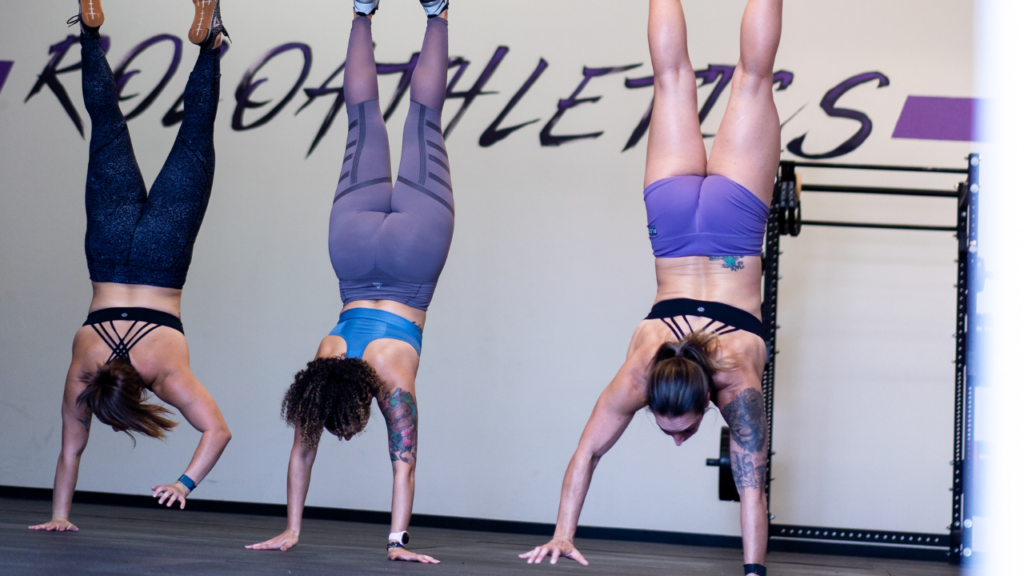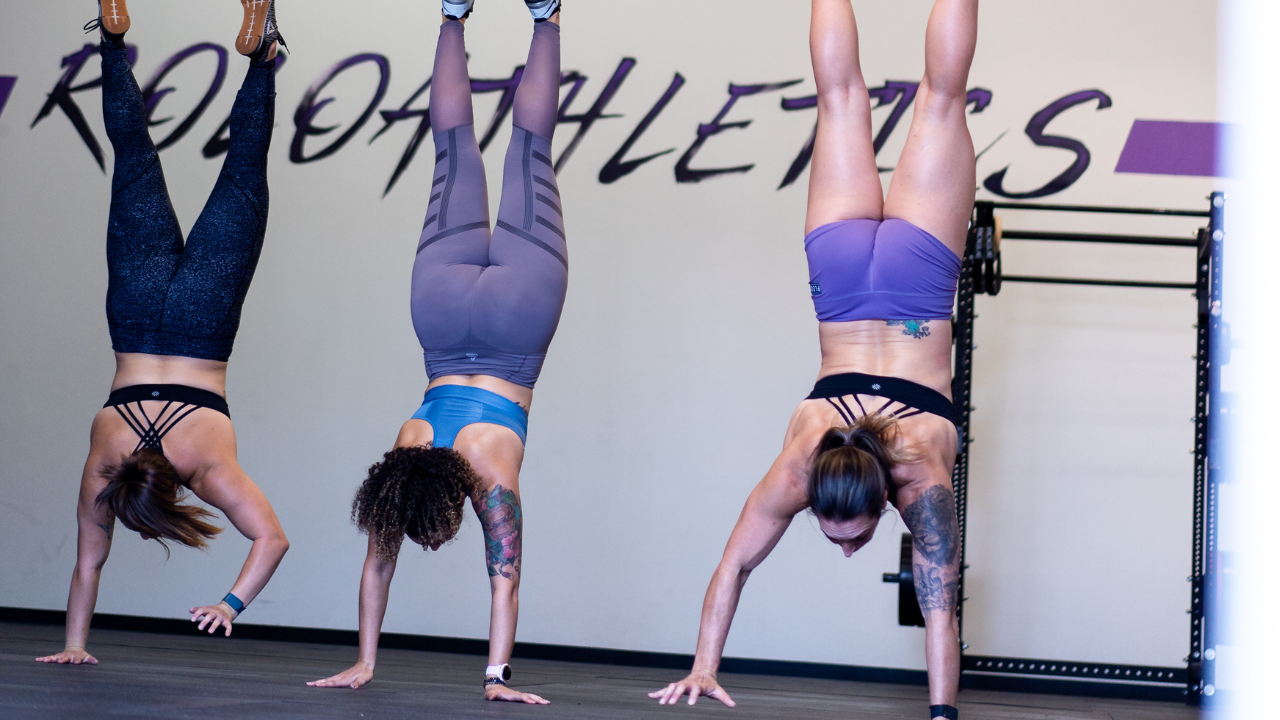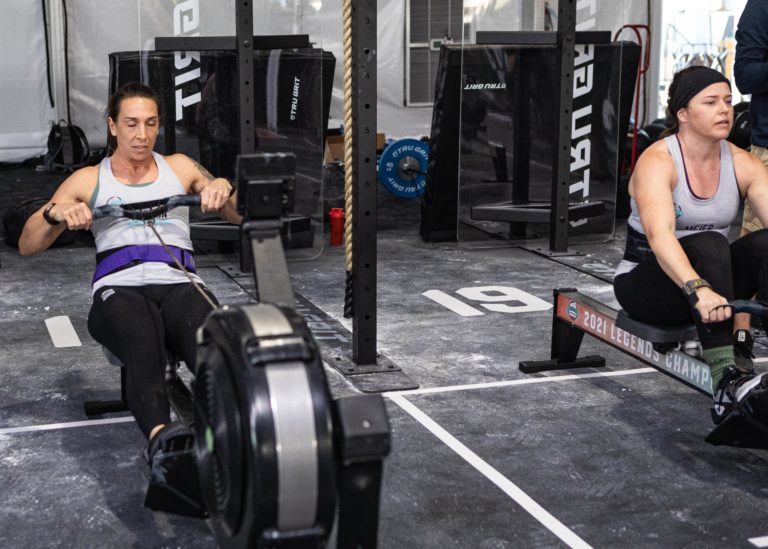Mastering Handstand Walks: 10 Essential Exercises for Strength and Stability

Whether you’re a competitive athlete, brand new to CrossFit, or just someone looking to improve their overall upside down skills, mastering handstand walks can be a challenging yet rewarding pursuit!
However, like any skill, it requires consistent practice and targeted training. Here are 10 exercises designed to help you develop the strength and stability necessary to crush some handstand walks.
- Handstand Holds: The foundation of handstand walking lies in mastering the handstand itself. Begin by practicing static handstand holds against a wall to build strength and confidence. Focus on maintaining a straight body line (think about ribs down, squeezing the butt) with engaged core muscles and wrists stacked directly under your shoulders.
- Wall Walks: A CrossFit favorite! Wall walks are an excellent progression from static handstand holds. Start in a plank position with your feet against a wall. Slowly walk your hands towards the wall, lifting your hips upward until you’re in a vertical position with your chest facing the wall. Reverse the movement to return to the starting position. This exercise helps build shoulder stability and strengthens the muscles required for handstand walking. Need help scaling these? Head here.
- Shoulder Taps: Shoulder taps are a great way to improve shoulder stability and proprioception, both of which are crucial for handstand walks. These are something you can use to substitute handstand walks in a workout! Gradually increase the speed of the taps to challenge your balance and coordination.
- Pike Push-Ups: Pike push-ups target the deltoids, triceps, and upper back muscles, all of which play a significant role in handstand walking. Start in a downward dog position with your hips lifted and your body forming an inverted V shape. Lower your head towards the ground by bending your elbows while keeping your core engaged. Push back up to the starting position to complete one repetition.
- Hollow Body Holds: The hollow body position is essential for maintaining a straight body line in handstands. Lie on your back with your arms extended overhead and your legs straight out in front of you. Lift your shoulders and legs off the ground while maintaining a slight hollow in your lower back. Hold this position for as long as possible, focusing on keeping your core tight and your body straight.
- Bear Crawls: Bear crawls are a dynamic exercise that targets the shoulders, core, and stabilizing muscles. Start in a tabletop position with your wrists stacked under your shoulders and your knees under your hips. Lift your knees off the ground, keeping them bent at a 90-degree angle. Crawl forward by moving your opposite hand and foot simultaneously, maintaining a stable core and minimizing hip movement. If these are super easy, play around with adding weight!
- Banded Lateral Walks: Lateral walks help improve hip stability and strengthen the muscles responsible for controlling side-to-side movement in handstand walks. Loop a resistance band around your ankles and assume a quarter-squat position with your feet hip-width apart. Take small steps to the side, maintaining tension in the band throughout the movement. Repeat in the opposite direction to work both sides equally.
- Wrist Strengthening Exercises: Strong wrists are essential for supporting your body weight during handstand walks. Incorporate wrist strengthening exercises such as wrist curls, wrist extensions, and wrist rotations into your routine to build strength and flexibility in the wrists and forearms.
- Core Exercises: A strong core is vital for maintaining balance and stability in handstand walks. Incorporate exercises like planks, hollow rocks, and leg raises into your training regimen to strengthen the muscles of the abdomen, lower back, and pelvis.
- Practice Handstand Walking: Finally, the best way to get better at handstand walks is to practice them regularly. Start by attempting short distances and gradually increase the length of your walks as you become more comfortable and confident. Focus on maintaining a tight core, engaged shoulders, and smooth, controlled movements. If you’re worried about falling over, you can always try “fall into wall” handstand walks.
Mastering handstand walks requires a combination of strength, balance, and coordination. By incorporating these 10 exercises into your training routine, you can build the necessary strength and stability to progress towards effortless handstand walks.
Remember to practice consistently, stay patient, and celebrate your progress along the way. With dedication and perseverance, you’ll be handstand walking like a pro in no time!






